tire size NISSAN JUKE 2018 Owners Manual
[x] Cancel search | Manufacturer: NISSAN, Model Year: 2018, Model line: JUKE, Model: NISSAN JUKE 2018Pages: 1672, PDF Size: 2.45 MB
Page 124 of 1672
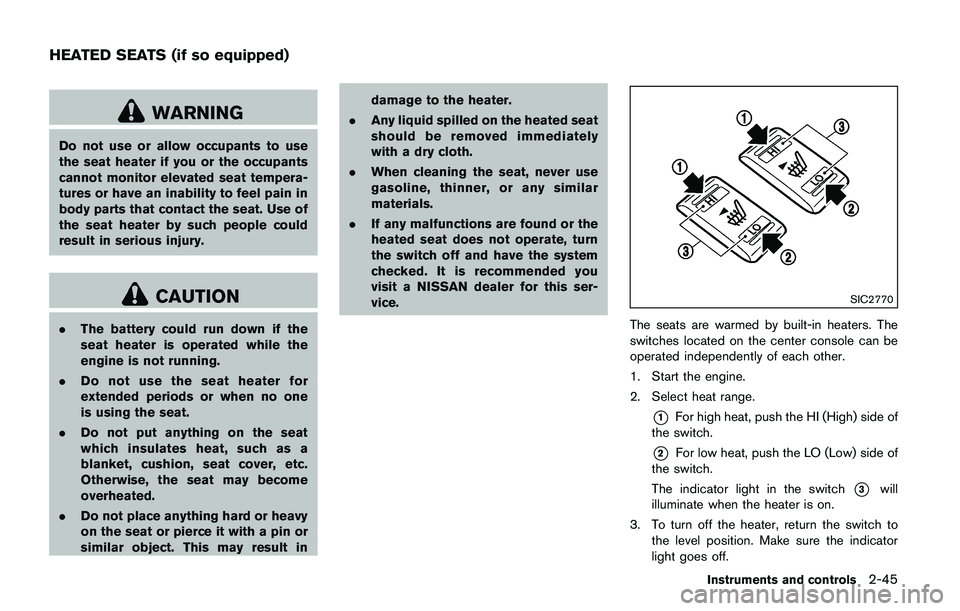
CAUTION
.The TPMS is not a substitute for the
regular tire pressure check. Be sure
to check the tire pressure regularly.
. If the vehicle is being driven at
speeds of less than 16 MPH (25
km/h) , the TPMS may not operate
correctly.
. Be sure to install the specified size
of tires to the four wheels correctly.
Page 295 of 1672
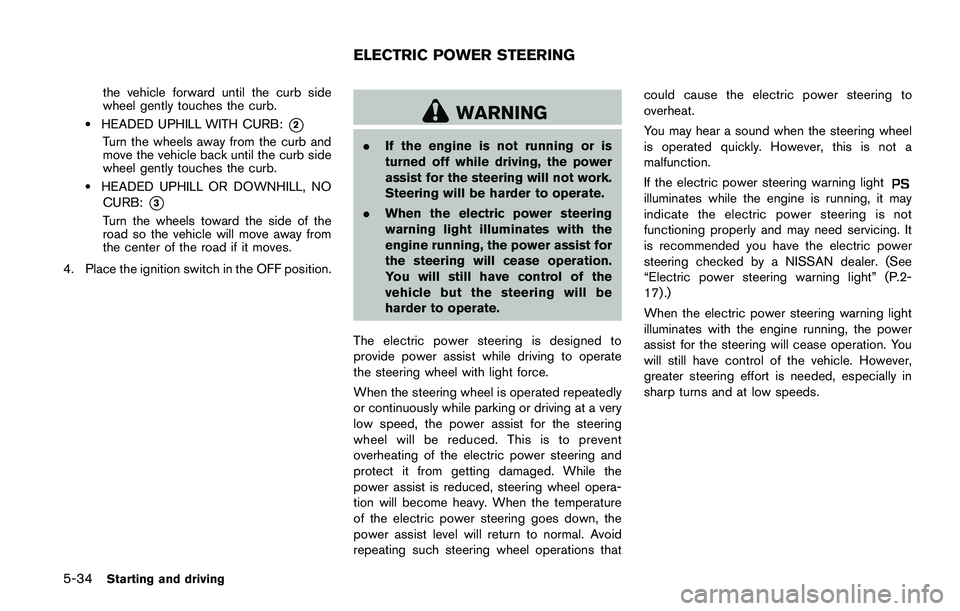
ment even if the other two wheels
are raised off the ground. Make sure
you inform test facility personnel
that your vehicle is equipped with
AWD before it is placed on a
dynamometer. Using the wrong test
equipment may result in drivetrain
damage or unexpected vehicle
movement which could result in
serious vehicle damage or personal
injury.
. When a wheel is off the ground due
to an unlevel surface, do not spin
the wheel excessively (AWD model) .
. Accelerating quickly, sharp steering
maneuvers or sudden braking may
cause loss of control.
. If at all possible, avoid sharp turning
maneuvers, particularly at high
speeds. Your vehicle has a higher
center of gravity than a conventional
passenger car. The vehicle is not
designed for cornering at the same
speeds as conventional passenger
cars. Failure to operate this vehicle
correctly could result in loss of
control and/or a rollover accident.
. Always use tires of the same type,
size, brand, construction (bias, bias- belted or radial) , and tread pattern
on all four wheels. Install traction
devices on the front wheels when
driving on slippery roads and drive
carefully.
. Be sure to check the brakes imme-
diately after driving in mud or water.
See “Brake system” (P.5-35) for wet
brakes.
. Avoid parking your vehicle on steep
hills. If you get out of the vehicle
and it rolls forward, backward or
sideways, you could be injured.
. Whenever you drive off-road
through sand, mud or water as deep
as the wheel hub, more frequent
maintenance may be required. See
the maintenance schedule shown in
the “9. Maintenance and schedules”
section.
. Spinning the front wheels on slip-
pery surfaces may cause the AWD
warning light to flash and the AWD
system to automatically switch from
the AWD mode to the 2WD mode.
This could reduce traction.
Page 318 of 1672
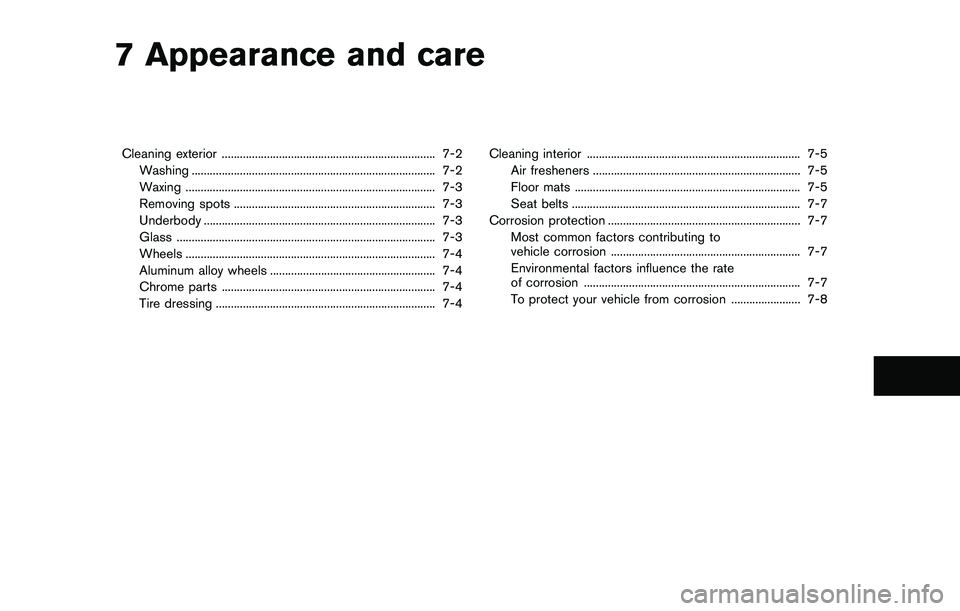
warning light will either remain illuminated or
blink.
High-temperature power train oil due to con-
tinuous operation of the vehicle to free a stuck
vehicle makes the warning light blink rapidly
(about twice per second) . The driving mode may
change to the 2WD mode. If the warning light
blinks rapidly during operation, stop the vehicle
with the engine idling in a safe place immedi-
ately. Then if the light goes off after a while, you
can continue driving.
A large difference between the diameters of
front and rear wheels will make the warning light
blink slowly (about once per 2 seconds) . Pull off
the road in a safe area, and idle the engine.
Check that all tire sizes are the same, tire
pressure is correct and tires are not worn.
Change the AWD mode switch to the 2WD
mode and do not drive fast.
Page 325 of 1672
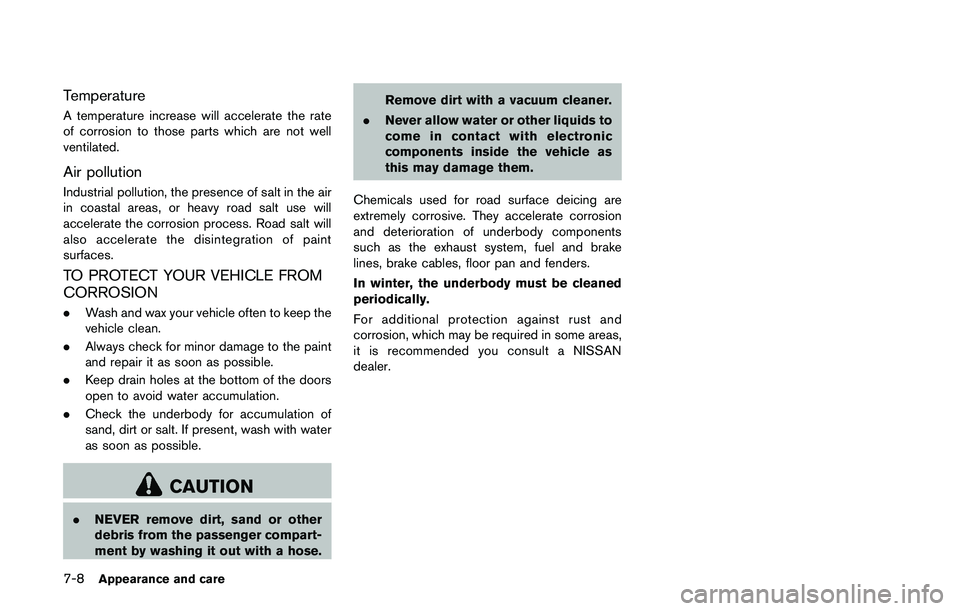
FREEING A FROZEN DOOR LOCK
To prevent a door lock from freezing, apply
deicer through the key hole. If the lock becomes
frozen, heat the key before inserting it into the
key hole or use the Intelligent Key system.
ANTI-FREEZE
In the winter when it is anticipated that the
outside temperature will drop below 328F(08C) ,
check the anti-freeze to assure proper winter
protection. For additional information, see “En-
gine cooling system” (P.8-4) .
BATTERY
If the battery is not fully charged during
extremely cold weather conditions, the battery
fluid may freeze and damage the battery. To
maintain maximum efficiency, the battery should
be checked regularly. For additional information,
see “Battery” (P.8-10) .
DRAINING OF COOLANT WATER
If the vehicle is to be left outside without anti-
freeze, drain the cooling system, including the
engine block. Refill before operating the vehicle.
For details, see “Engine cooling system” (P.8-4) .
TIRE EQUIPMENT
SUMMER tires have a tread designed to provide
superior performance on dry pavement. How-
ever, the performance of these tires will be
substantially reduced in snowy and icy condi-
tions. If you operate your vehicle on snowy or icy
roads, NISSAN recommends the use of MUD &
SNOW or ALL SEASON tires on all four wheels.
It is recommended you consult a NISSAN dealer
for the tire type, size, speed rating and
availability information.
For additional traction on icy roads, studded
tires may be used. However, some U.S. states
and Canadian provinces prohibit their use.
Check local, state and provincial laws before
installing studded tires.
Skid and traction capabilities of studded
snow tires, on wet or dry surfaces, may be
poorer than that of non-studded snow
tires.
Tire chains may be used. For details, see “Tire
chains” (P.8-37) of this manual.
All-Wheel Drive (AWD) model
If you install snow tires, they must also be the
same size, brand, construction and tread pattern
on all four wheels.
SPECIAL WINTER EQUIPMENT
It is recommended that the following items be
carried in the vehicle during winter:
. A scraper and stiff-bristled brush to remove
ice and snow from the windows and wiper
blades.
. A sturdy, flat board to be placed under the
jack to give it firm support.
. A shovel to dig the vehicle out of snow-
drifts.
. Extra window washer fluid to refill the
reservoir tank.
DRIVING ON SNOW OR ICE
Page 387 of 1672
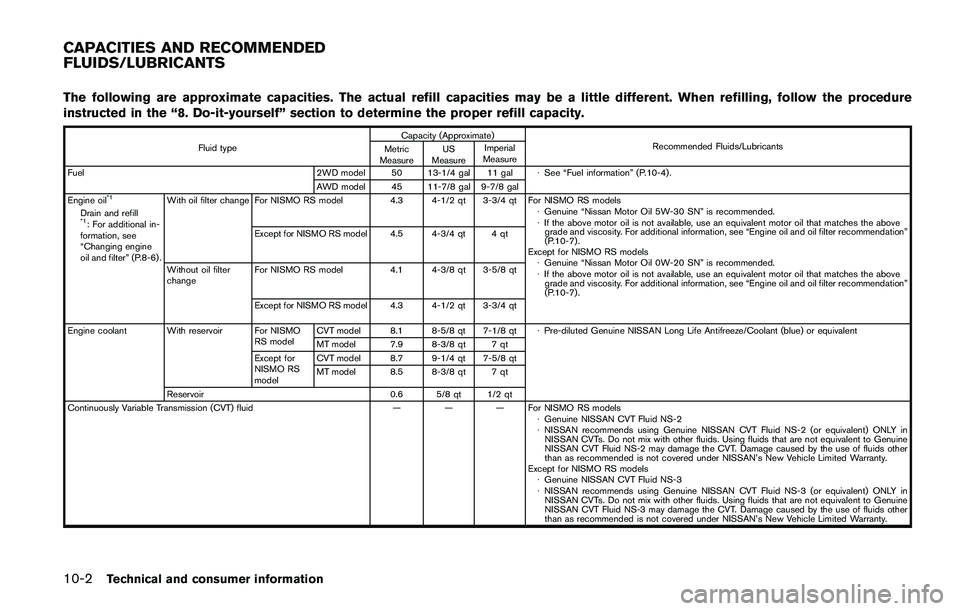
Warranty Information Booklet.
All season tires
NISSAN specifies all season tires on some
models to provide good performance all year,
including snowy and icy road conditions. All
Season tires are identified by ALL SEASON
and/or M&S (Mud and Snow) on the tire
sidewall. Snow tires have better snow traction
than All Season tires and may be more appro-
priate in some areas.
Summer tires
NISSAN specifies summer tires on some
models to provide superior performance on dry
roads. Summer tire performance is substantially
reduced in snow and ice. Summer tires do not
have the tire traction rating M&S on the tire
sidewall.
If you plan to operate your vehicle in snowy or
icy conditions, NISSAN recommends the use of
SNOW tires or ALL SEASON tires on all four
wheels.
Snow tires
If snow tires are needed, it is necessary to select
tires equivalent in size and load rating to the
original equipment tires. If you do not, it can
adversely affect the safety and handling of your
vehicle.
Generally, snow tires will have lower speed
ratings than factory equipped tires and may not
match the potential maximum vehicle speed.
Never exceed the maximum speed rating of the
tire.
If you install snow tires, they must be the same
size, brand, construction and tread pattern on all
four wheels.
For additional traction on icy roads, studded
tires may be used. However, some U.S. states
and Canadian provinces prohibit their use.
Check local, state and provincial laws before
installing studded tires. Skid and traction cap-
abilities of studded snow tires, on wet or dry
surfaces, may be poorer than that of non-
studded snow tires.
TIRE CHAINS
Use of tire chains may be prohibited according
to location. Check the local laws before instal-
ling tire chains. When installing tire chains, make
sure they are the proper size for the tires on your
vehicle and are installed according to the chainmanufacturer’s suggestions.
Use only SAE
Class S chains. Class “S” chains are used on
vehicles with restricted tire to vehicle clearance.
Vehicles that can use Class “S” chains are
designed to meet the SAE standard minimum
clearances between the tire and the closest
vehicle suspension or body component required
to accommodate the use of a winter traction
device (tire chains or cables) . The minimum
clearances are determined using the factory
equipped tire size. Other types may damage
your vehicle. Use chain tensioners when re-
commended by the tire chain manufacturer to
ensure a tight fit. Loose end links of the tire
chain must be secured or removed to prevent
the possibility of whipping action damage to the
fenders or underbody. If possible, avoid fully
loading your vehicle when using tire chains. In
addition, drive at a reduced speed. Otherwise,
your vehicle may be damaged and/or vehicle
handling and performance may be adversely
affected.
Tire chains must be installed only on the
front wheels and not on the rear wheels.
Never install tire chains on a TEMPORARY USE
ONLY spare tire.
Do not use tire chains on dry roads. Driving with
tire chains in such conditions can cause damage
to the various mechanisms of the vehicle due to
Do-it-yourself8-37
Page 437 of 1672

S
SafetyChild seat belts .................................................... 1-16
Reporting safety defects ................................. 10-20
Seat adjustment Front manual seat adjustment ............................. 1-3
Front seats ............................................................... 1-3
Seat belt(s) Child safety ........................................................... 1-16
Infants ..................................................................... 1-17
Injured persons .................................................... 1-12
Larger children ..................................................... 1-17
Precautions on seat belt usage ....................... 1-10
Pregnant women .................................................. 1-12
Seat belt cleaning .................................................. 7-7
Seat belt extenders ............................................. 1-15
Seat belt hooks .................................................... 1-15
Seat belt maintenance ....................................... 1-15
Seat belt warning light ....................................... 2-20
Seat belts .............................................................. 1-10
Seat belts with pretensioners .......................... 1-52
Shoulder belt height adjustment ..................... 1-14
Small children ....................................................... 1-17
Three-point type .................................................. 1-12
Seat(s) Heated seats ........................................................ 2-45
Seats .......................................................................... 1-2
Security system (NISSAN Vehicle Immobilizer
System) , Engine start ................................................ 2-34
Security system, Vehicle security system ............. 2-33
Servicing air conditioner ........................................... 4-35
Setting climate eco .................................................... 4-34
Shift lever Shift lock release ................................................. 5-18
Shift lock release Transmission ......................................................... 5-18 Shifting
CVT (Continuously Variable Transmission) .... 5-14
Manual transmission ........................................... 5-19
Shoulder belt height adjustment, For
front seats .................................................................... 1-14
Siri
�ŠEyes Free ............................................................ 4-76
SOURCE select switch ............................................ 4-73
Spare tire .......................................................... 8-41, 10-9
Spark plugs .................................................................. 8-13
Speedometer ................................................................. 2-7
Standard maintenance ................................................ 9-7
Starting Before starting the engine ................................ 5-12
Jump starting ........................................................... 6-9
Precautions when starting and driving ............. 5-2
Push starting ......................................................... 6-11
Starting the engine ............................................. 5-13
Status light, Front passenger air bag .................... 1-46
Steering Electric power steering ...................................... 5-34
Steering wheel switch for audio controls ..... 4-73
Tilting steering column ....................................... 3-20
Storage ......................................................................... 2-47
Sun visors ..................................................................... 3-21
Supplemental air bag warning labels .................... 1-54
Supplemental air bag warning light ........... 1-54, 2-20
Supplemental restraint system ................................ 1-38 Precautions on supplemental
restraint system .................................................... 1-38
Switch Audio control steering wheel switch .............. 4-73
Autolight switch ................................................... 2-40
Fog light switch ................................................... 2-44
Hazard warning flasher switch ............................ 6-2
Headlight switch .................................................. 2-40
Power door lock switch ........................................ 3-5 Rear window and outside mirror
defroster switch ................................................... 2-38
Turn signal switch ................................................ 2-43
Vehicle dynamic control (VDC) off switch .... 2-44T
Tachometer ..................................................................... 2-9
Temperature display ................................................... 2-12
Temperature gauge, Engine coolant
temperature gauge ..................................................... 2-10
Text messaging ........................................................... 4-93
Theft (NISSAN Vehicle Immobilizer System) ,
Engine start .................................................................. 2-34
Three-way catalyst ....................................................... 5-3
Tilt steering column .................................................... 3-20
Tire pressure, Low tire pressure warning light .... 2-18
Tires
Flat tire ...................................................................... 6-3
Low tire pressure warning system ..................... 5-3
Tire and Loading information label .... 8-30, 10-12
Tire chains ............................................................. 8-37
Tire dressing ............................................................ 7-4
Tire pressure ......................................................... 8-28
Tire pressure monitoring
system (TPMS) .............................................. 5-3, 6-3
Tire rotation ........................................................... 8-38
Types of tires ........................................................ 8-36
Uniform tire quality grading ............................. 10-19
Wheel/tire size ..................................................... 10-9
Wheels and tires ................................................. 8-28
Tonneau cover (see cargo cover) .......................... 2-49
Touch screen ................................................................. 4-4
Towing Flat towing ........................................................... 10-18
Tow truck towing ................................................. 6-13
Towing a trailer ................................................... 10-18
11-5
Page 438 of 1672

TPMS, Tire pressure monitoring system ................ 5-3
TPMS, Tire pressure warning system ..................... 6-3
Trailer towing ............................................................ 10-18
TransmissionContinuously Variable Transmission
(CVT) fluid ................................................................ 8-8
Driving with CVT (Continuously
Variable Transmission) ....................................... 5-14
Driving with manual transmission .................... 5-19
Transmission shift lever lock release .............. 5-18
Transmitter, With Intelligent Key system
(See Intelligent Key system) .................................... 3-12
Traveling or registering in another country........ 10-10
Trip computer .............................................................. 2-13
Turn signal switch ....................................................... 2-43
U
Underbody cleaning ..................................................... 7-3
Uniform tire quality grading ................................... 10-19
USB (Universal Serial Bus)
connection port ............................................... 4-57, 4-67
V
Vanity mirror ................................................................. 3-23
Variable voltage control system .............................. 8-12
Vehicle Dimensions and weights ................................. 10-10
Identification number (VIN) ............................. 10-11
Information display.................................... 2-11, 2-12
Loading information .......................................... 10-15
Recovery (freeing a stuck vehicle) .................. 6-15
Security system .................................................... 2-33
Vehicle dynamic control (VDC) off switch .... 2-44
Vehicle dynamic control (VDC) system ......... 5-37
Ventilators ..................................................................... 4-27 Voice command .......................................................... 4-91
Voice Prompt Interrupt .............................................. 4-91
W
Warning
Hazard warning flasher switch ............................ 6-2
Lights ...................................................................... 2-16
Tire pressure monitoring
system (TPMS) .............................................. 5-3, 6-3
Warning lights, indicator lights and
audible reminders ................................................ 2-15
Warning labels, Air bag warning labels ................ 1-54
Warning light Air bag warning light ............................... 1-54, 2-20
Anti-lock braking system (ABS)
warning light ......................................................... 2-16
AWD warning light .............................................. 5-31
Brake warning light ............................................. 2-16
Door open warning light .................................... 2-17
Electric power steering warning light ............. 2-17
Intelligent Key system warning light ............... 2-18
Low fuel warning light ........................................ 2-18
Low tire pressure warning light ....................... 2-18
Seat belt warning light ....................................... 2-20
Warranty, Emission control system warranty .... 10-20
Washer switch Rear window wiper and washer switch ........ 2-37
Wiper and washer switch ................................. 2-36
Washing .......................................................................... 7-2
Waxing ............................................................................ 7-3
Weights (See dimensions and weights) ........... 10-10
Wheel/tire size ............................................................ 10-9
Wheels and tires ........................................................ 8-28 Care of wheels ........................................................ 7-4
Cleaning aluminum alloy wheels ......................... 7-4
Window washer fluid ................................................... 8-9 Window(s)
Cleaning .................................................................... 7-3
Power windows .................................................... 2-50
Wiper Rear window wiper and washer switch ........ 2-37
Rear window wiper blade ................................. 8-16
Wiper and washer switch ................................. 2-36
Wiper blades ........................................................ 8-15
Wiper and washer switch ........................................ 2-36
X
Xenon headlights ........................................................ 2-39
Page 579 of 1672

CAUTION
.The TPMS is not a substitute for the
regular tire pressure check. Be sure
to check the tire pressure regularly.
. If the vehicle is being driven at
speeds of less than 16 MPH (25
km/h) , the TPMS may not operate
correctly.
. Be sure to install the specified size
of tires to the four wheels correctly.
Page 712 of 1672

CAUTION
.The TPMS is not a substitute for the
regular tire pressure check. Be sure
to check the tire pressure regularly.
. If the vehicle is being driven at
speeds of less than 16 MPH (25
km/h) , the TPMS may not operate
correctly.
. Be sure to install the specified size
of tires to the four wheels correctly.
Page 825 of 1672

Warranty Information Booklet.
All season tires
NISSAN specifies all season tires on some
models to provide good performance all year,
including snowy and icy road conditions. All
Season tires are identified by ALL SEASON
and/or M&S (Mud and Snow) on the tire
sidewall. Snow tires have better snow traction
than All Season tires and may be more appro-
priate in some areas.
Summer tires
NISSAN specifies summer tires on some
models to provide superior performance on dry
roads. Summer tire performance is substantially
reduced in snow and ice. Summer tires do not
have the tire traction rating M&S on the tire
sidewall.
If you plan to operate your vehicle in snowy or
icy conditions, NISSAN recommends the use of
SNOW tires or ALL SEASON tires on all four
wheels.
Snow tires
If snow tires are needed, it is necessary to select
tires equivalent in size and load rating to the
original equipment tires. If you do not, it can
adversely affect the safety and handling of your
vehicle.
Generally, snow tires will have lower speed
ratings than factory equipped tires and may not
match the potential maximum vehicle speed.
Never exceed the maximum speed rating of the
tire.
If you install snow tires, they must be the same
size, brand, construction and tread pattern on all
four wheels.
For additional traction on icy roads, studded
tires may be used. However, some U.S. states
and Canadian provinces prohibit their use.
Check local, state and provincial laws before
installing studded tires. Skid and traction cap-
abilities of studded snow tires, on wet or dry
surfaces, may be poorer than that of non-
studded snow tires.
TIRE CHAINS
Use of tire chains may be prohibited according
to location. Check the local laws before instal-
ling tire chains. When installing tire chains, make
sure they are the proper size for the tires on your
vehicle and are installed according to the chainmanufacturer’s suggestions.
Use only SAE
Class S chains. Class “S” chains are used on
vehicles with restricted tire to vehicle clearance.
Vehicles that can use Class “S” chains are
designed to meet the SAE standard minimum
clearances between the tire and the closest
vehicle suspension or body component required
to accommodate the use of a winter traction
device (tire chains or cables) . The minimum
clearances are determined using the factory
equipped tire size. Other types may damage
your vehicle. Use chain tensioners when re-
commended by the tire chain manufacturer to
ensure a tight fit. Loose end links of the tire
chain must be secured or removed to prevent
the possibility of whipping action damage to the
fenders or underbody. If possible, avoid fully
loading your vehicle when using tire chains. In
addition, drive at a reduced speed. Otherwise,
your vehicle may be damaged and/or vehicle
handling and performance may be adversely
affected.
Tire chains must be installed only on the
front wheels and not on the rear wheels.
Never install tire chains on a TEMPORARY USE
ONLY spare tire.
Do not use tire chains on dry roads. Driving with
tire chains in such conditions can cause damage
to the various mechanisms of the vehicle due to
Do-it-yourself8-37